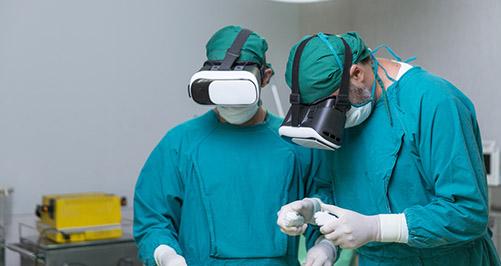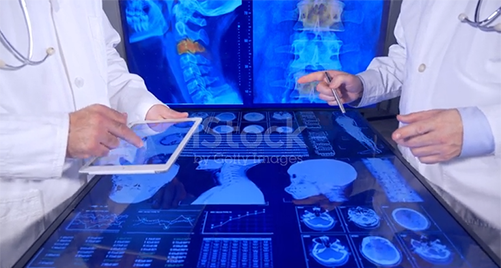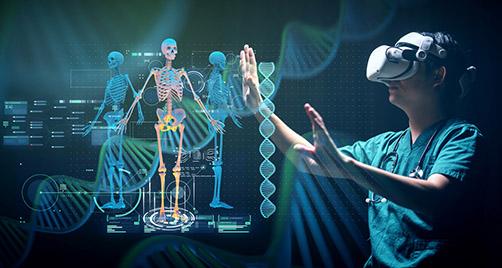- What are medical simulators?
- What are the benefits of medical simulators and how are they being used?
- What are NIBIB-funded researchers developing in the area of simulators to improve medical care?
What are medical simulators?

These tools simulate clinical scenarios by providing realistic representations of patients, medical and surgical instruments, and workflows. They are used widely in medical education to allow students and professionals to practice and hone their skills without exposing patients to unnecessary risks or harm. Virtual reality is a tool that simulates patient scenarios under different conditions that is used increasingly for training in surgical procedures.
What are the benefits of medical simulators and how are they being used?
- Training in medical/surgical procedures, including those that are rare or complex. Medical educators use simulators such as lifelike mannequins or virtual representations of patients to practice clinical scenarios. These tools can simulate realistic anatomy, tissue, and tactile feedback. Other simulators prepare clinicians for procedures by using realistic workflows, including planning, warm-up exercises, and rehearsal for a specific procedure.
- Improving patient outcomes and reducing medical errors. Successful surgery depends on both technical and nontechnical skills, including the ability of an interdisciplinary team to work together and communicate. Simulated operating rooms and surgical suites can enable interdisciplinary teams to virtually practice their clinical skills and institutional protocols, which can reduce medical errors.
-
Media Image

Rehabilitating patients with movement disorders. Movement disorders such as Parkinson’s disease and musculoskeletal disorders such as osteoarthritis affect millions of Americans and limit their mobility. Simulators use computer modeling and simulation methods to create virtual representations of patients so clinicians can identify the treatment design that is most likely to recover lost function.
What are NIBIB-funded researchers developing in the area of simulators to improve medical care?
- Physically realistic virtual surgery. The operating room (OR) is a dynamic environment where interdisciplinary teams must work effectively to provide the best patient care. Researchers at Rensselaer Polytechnic Institute are developing and validating a computer-based technology that could one day become a virtual OR for surgical team training. The challenges of facility-based OR training—it’s expensive, personnel intensive, and requires dedicated space—would be overcome by harnessing recent advances in cloud computing, mobile device-based virtual reality, and artificial intelligence and machine learning.

- Computer software to design personalized treatment of impaired movement. Researchers at Rice University are developing computer software that may improve the design of treatments for impaired movement caused by conditions such as stroke, osteoarthritis, spinal cord injury, orthopedic cancer, and limb amputation. The software would allow researchers to build a virtual model of the patient and then systematically test various treatment scenarios to identify the most promising treatment option and implementation method for the patient, without a lengthy trial and error process.
- Simulated biomechanics with virtual coaching to fix fractures. Orthopedic surgeons who fix broken bones must know which factors promote bone stability, healing, and patient functioning. The surgeon must match several factors including proper implant selection, application technique, and post-operative management with the patient’s age, size, bone density, fracture location, and complexity. Researchers at Stanford University have built a simulation software tool that could allow surgeons to change their bone fracture model and weight-bearing plan in real-time and see the impact on three-dimensional biomechanics. The researchers plan to integrate an autonomous virtual coach into the software that will provide flexible, personalized training based on each surgeon’s progress.
